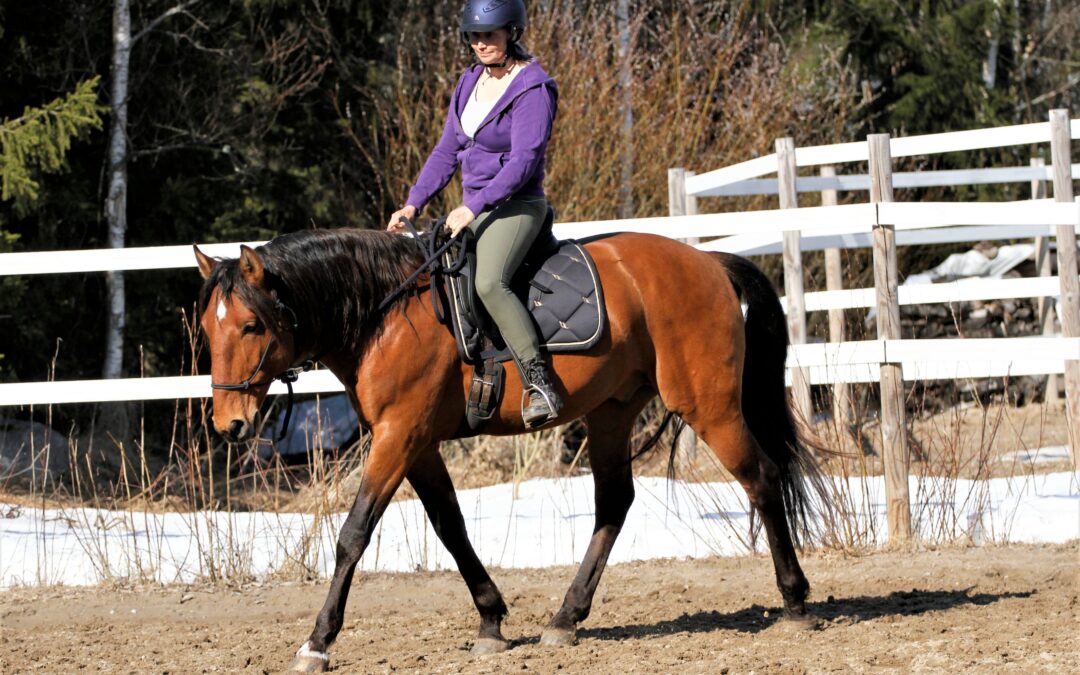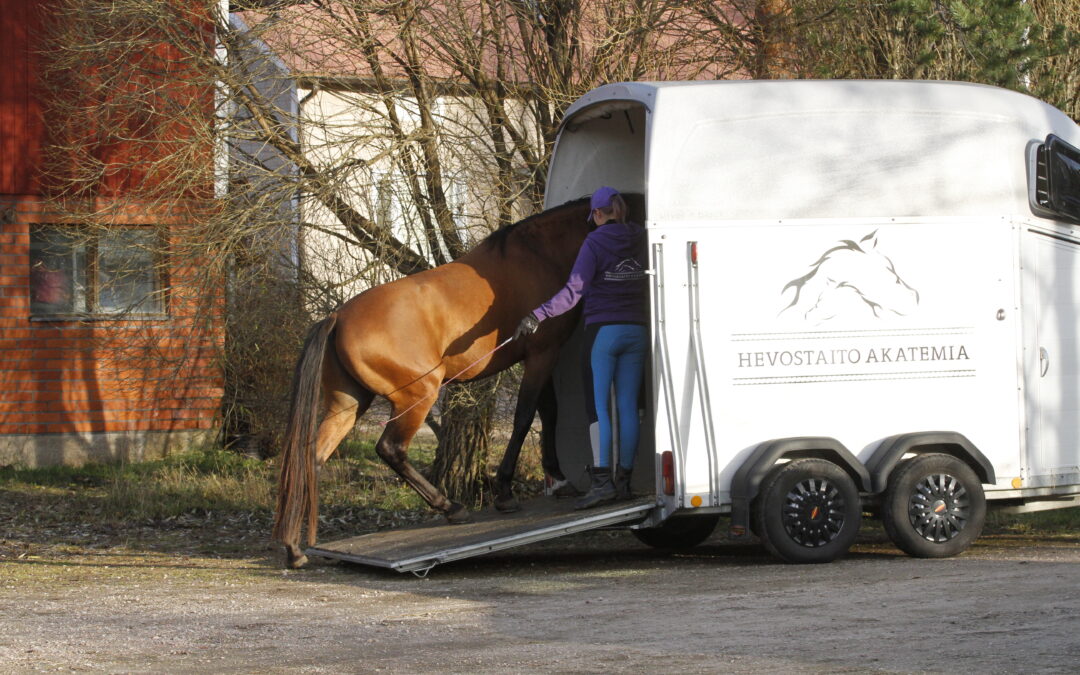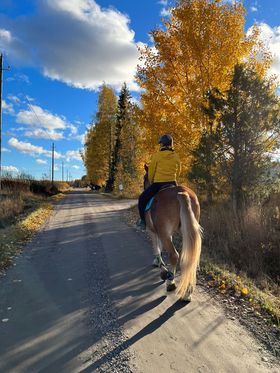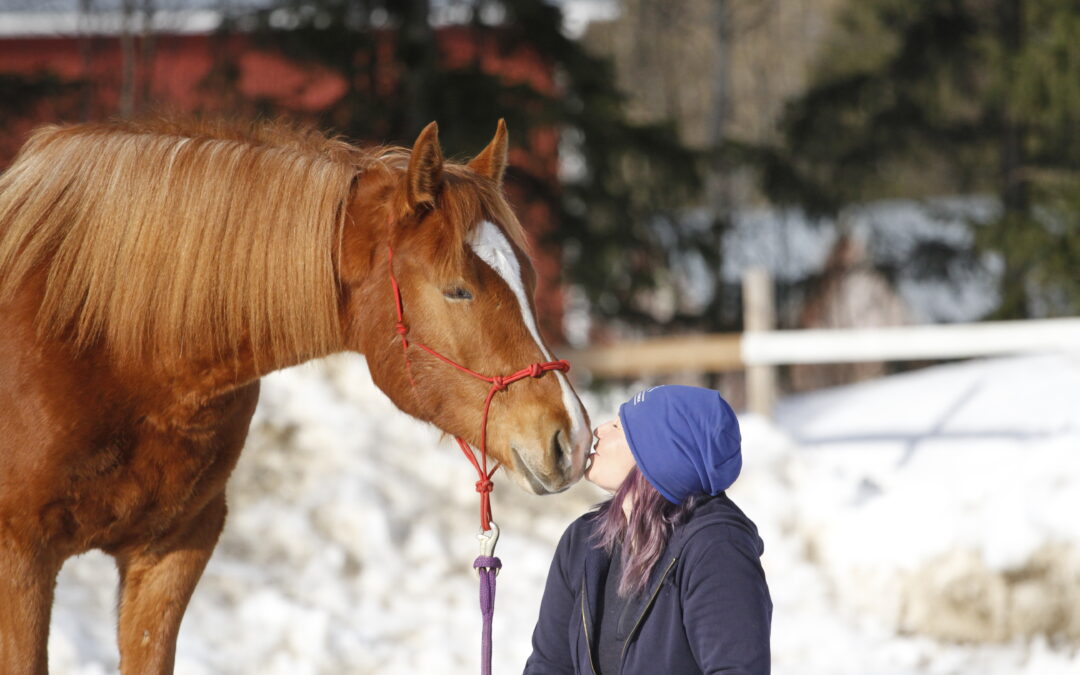I collected a list of horse pain behavior from my followers on Facebook. I asked what kind of pain behavior people had observed in horses. The list of answers is below.
My note to this is that I often think about pain behavior myself in such a way that when there are several signs of pain behavior, I suspect pain. If the horse only has one or two signs, I memorize them so I can monitor if there comes more signs.
• restlessness
• irritability
• sensitivity to touch/shivering
• manic nibbling at things
• grinding everything possible and taking loose objects in the mouth
• anxiety
• tension
freaking out about non-existent things
• rushing
• overreaction to everything
an almost imperceptible weight shift to the legs further away from me when harnessed
• loping of the trotting horse vanished, the horse became more satisfied when a suitable harness was found
• rearing at the arena door
• the horse did not meet me normally when I got to pick him inside
• stopping when riding
• biting
• eating manure
• standing with hind legs far behind
• water came with the manure
• abnormal movement
• the look of the horse at the gate of the shelter somehow strange -> fever closer to 40 degrees.
• in a grooming situation/equipping/ butting the rug on – biting, kicking, avoiding contact and equipment
• dodging when mounting
• when riding not wanting to move, when asked to move forward, kicking
• unusual startling when riding/driving
• difficulties in putting on shoes – pulling the foot out, rearing
• avoiding rein contact
• bucking
• unusual movement
• moving tense
• swinging tail while riding
• head shaking
• opening the mouth
• sticking the tongue out
• selecting food
• doesn’t eat hay or drink water
• wants to lie down
• panting
• does not allow touching under the stomach
• gets out of breath even from a little movement
• sweats more easily
• gets irritated by touching the neck
• unpredictable behavior
• Shoeing problems with someone who has been properly taught the procedure.
• pulling the front legs when picking the hooves
• reluctance to move while riding
• showing off when getting on the back
• pulling the reins
• sighing while riding
• playing with the tongue
• stretches his neck and opens his mouth at the same time
• reckless and very aggressive behavior towards people
• passivity/too calm, e.g. when putting on shoes, when his usually been playful
• swallowing the air when tightening the stomach belt
• blinking the eyes and a tense face
• stands with hind legs under stomach
• bites his sides
• heavy breathing
• apathetic at times
• nervous in the corridor/pen
• avoids touching
• kicking in his own belly
• Sudden departures
• a worried look in the eyes
• Stands with hind legs apart
• when longed, reaches for the humans armpit and sighs.
• goes downhills really slow
• in the trot and canter, paces the steps so that the sore leg takes a shorter step.
• the horse stops and touches the toe of my boot slowly when I’m on the horse
• isolation from the herd
• staring into the distance
• strong aggressive reaction to the pressure caused by the human gaze
• aggressive behavior in normal grooming situation
• acting like he will nibble
• restless behavior during transport on an uneven surface
• A shut down look
• stopping of ear movements
• unresponsiveness to aids while riding
• bites without warning
• tries to kick
• kicking the walls of the stall
• different behavior on different days
• bucking in lope transitions
• constant yawning
• pawing
• pain face
• food aggression
• at worst biting and kicking
• aggressiveness
• hypersensitivity to touch
• fear
• difficulties in learning
• rushing and fussing/general restlessness
• easily irritated
• unwilling to move/uncontrollable moving (no inbetween model)
• phlegmatic
• learned helplessness
• “manic” attitude towards food/friends/resources.
• “face twisting” and yawning for no reason and without bit at the odd moment.
• picking at clothes, string etc. and when he gets a hold of something he can’t let go, at the same time a tense expression and looking “nauseated”
• abnormal movement (due to sand)
• grimacing
• teeth grinding
• attacking towards humans
• taking off
• at worst did not allow himself to be touched from the neck backwards
• could not lope the right lope in a straight line
• lameness (due to intestinal inflammation)
• a normally good-natured horse becomes grumpy or withdrawn.
• goes tail or neck/head unilaterally crooked
• constantly moves the rider sideways in the saddle.
• the movement of the front leg or hind leg is shortened.
• goes downhill more or less sideways.
• mouth in a massive foam.
• goes hindlegs far behind.
• attacks a person
• getting scared at passing situations on the field/in the arena
• kicking sides/stomach when touching/intending to touch/approaching
• taking a piece of treat from the hand in an ugly way with the teeth (food aggressiveness)
• rearing when led
• scaring little things
• bites the walls of the box
• a tired expression
• a tense expression, a face that looks generally anxious
• heavy breathing
• excessive hunger, so-called nothing is enough and aggressive after food
• tantrums/aggressiveness towards other horses, especially when distributing hay, but also in other ways, e.g. demanding another to scratch and then suddenly attacks.
• scratching his sides
• yawning whe it’s too long from the previous hay dose
• increased startling, sound sensitivity and separation anxiety
• runs over people
• unwillingness to move, stops and when forced to trot, rages
• worry wrinkles
• doesn’t want bridles, gets nervous about equipment in general
• difficult to stand when shod
• pulled the pectoral muscles, the nape of the neck, the back stuck, i.e. the whole horse was tight
• the second hindleg stepped strongly under the stomach
• abdominal tension
• took off while riding, etc.
• sped frantically with no chance of getting under control
• urticaria
• ate grass more slowly than usual
• chewing the pectorals and stomping the foot
• the base of the tail was up and the tail was curving to the right
• sleeve grabbing/snapping/ tail wagging when we put the rug on/moved to the sides
• clear restlessness in the stable without any abnormal event in the stable.
• startling, the more little green men were in the environment, the more painful he was
• sensitive to sounds, movement.
• exploded when frightened
• codependency
• keeping the head tilted
• bullying a friend horse
• repeated lifting of the upper lip, flehmen
Quite a list isn’t it!
Many behaviors that indicate pain have earlier been explained by many other ways. It’s important to get rid of these old believes and start recognising behavior which tells us that horses are in pain and need our help.
If you suspect pain related behavior, make a list which behaviors could indicate pain. It will help you and the vet to know if your horse is in pain and maybe even where to look.
Horses know how to be horses, it’s our responsibility to learn what they are telling us!
